
Running an online store is challenging enough without having to worry about fraudsters chipping away at your hard-earned revenue. It feels like a constant battle, but you don't have to fight it with outdated tactics. The good news is that with the right strategies, you can build a strong defense that protects your business without frustrating your real customers. Security isn't just an add-on; it's a core part that should be considered right from the beginning, even when you're just starting the process of building a website to sell products.
This guide cuts through the technical jargon to give you clear, actionable steps you can start using today. We will walk you through eight powerful ecommerce fraud prevention best practices that are essential for staying secure and profitable. From setting up multi-layer authentication to using real-time transaction monitoring, you'll learn how to spot suspicious activity and stop it before it costs you money. Each practice is broken down into simple, manageable actions, so you can strengthen your defenses immediately. Let's get started on protecting your profits and giving you peace of mind.
1. Multi-Layer Authentication and Identity Verification
Relying on just a password for security is like using a single lock on a bank vault. It’s a start, but it won't stop a determined thief. Multi-layer authentication adds several locks, creating a strong defense system that confirms a customer's identity before they can complete a purchase. This approach combines different verification methods, making it much harder for fraudsters to get into an account, even if they've stolen a password.
This strategy goes beyond a simple password by requiring users to provide additional proof of identity. Think of it as a digital bouncer checking IDs at the door. It can involve something the user knows (a password), something they have (a code sent to their phone), or something they are (a fingerprint or face scan). This combination is a cornerstone of modern ecommerce fraud prevention best practices because it validates the user, not just the credentials.

Why It's a Top Practice
Multi-layer authentication creates multiple barriers that a fraudster has to get through. For example, Amazon often sends a one-time password (OTP) to your phone if you log in from a new device. Similarly, Apple uses Face ID or Touch ID for App Store purchases, linking the transaction directly to your unique biometric data. This makes simple credential stuffing attacks almost useless.
How to Implement It
Getting started with multi-layer authentication doesn't have to be complicated. Here are some actionable steps for your Shopify or ecommerce store:
- Implement Adaptive Authentication: Instead of challenging every user, use a risk-based approach. Trigger extra verification steps only for suspicious activities, like an unusually large order or a login from a new location. This keeps the experience smooth for legitimate customers.
- Offer Multiple Options: Give customers choices for their second factor, such as an SMS code, an authenticator app like Google Authenticator, or a biometric scan. This improves the user experience and makes it more likely people will use it.
- Use Step-Up Authentication: Save the strictest checks for high-stakes actions. For instance, allow browsing with just a password but require a second factor for completing a high-value purchase or changing account details.
By layering these security measures, you build a powerful defense that protects both your business and your customers. To dive deeper into the technical aspects and benefits, you can explore more about advanced fraud prevention strategies for your ecommerce store.
2. Real-Time Transaction Monitoring and Machine Learning
Manually reviewing every transaction is impossible for a growing ecommerce store. Real-time transaction monitoring uses artificial intelligence (AI) and machine learning to do this work for you, analyzing hundreds of data points in milliseconds. These smart systems act like a highly trained security team, instantly flagging suspicious activities before they turn into costly chargebacks. They learn from past data to spot subtle oddities that a human might miss, adapting on the fly to new fraud tactics.
This approach is one of the most powerful ecommerce fraud prevention best practices because it goes beyond static rules. Instead of just blocking transactions from a certain IP address, it analyzes behavior. Is this customer suddenly buying 10 high-value items when they usually buy one? Are they shipping to a new address far from their billing location? Machine learning connects these dots in real time to calculate a risk score and decide whether to approve, flag, or decline the order.
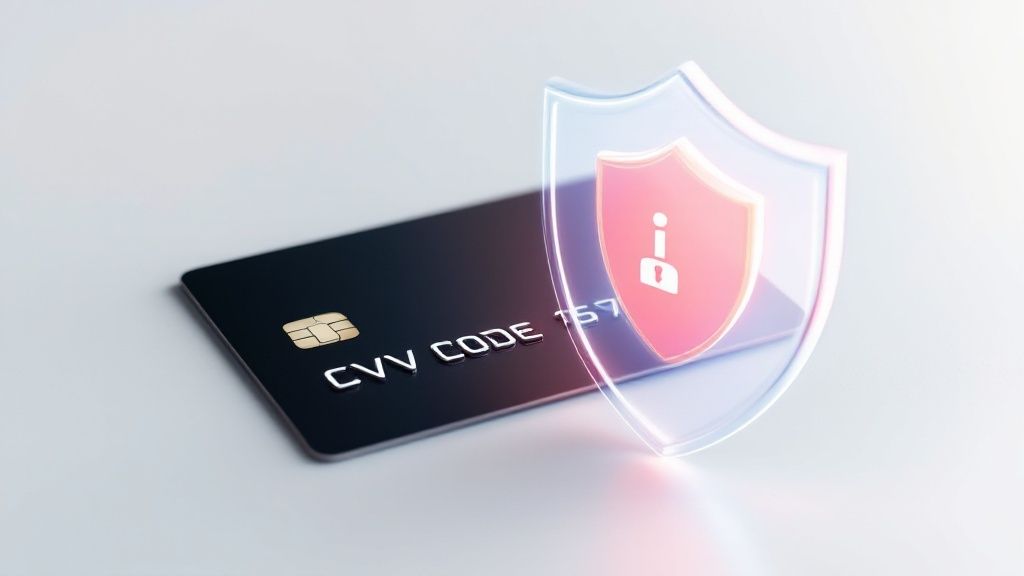
Why It's a Top Practice
Machine learning systems are incredibly effective because they evolve. A fraudster's tactics might change, but the system learns and adjusts. For example, Stripe Radar automatically learns from transactions across its entire network, meaning a fraud pattern spotted for one business helps protect all others. Similarly, PayPal’s AI-driven risk assessment can identify and block fraudulent transactions with remarkable accuracy, protecting merchants from financial loss without disrupting legitimate sales.
How to Implement It
You don't need a team of data scientists to use this technology. Many tools are built directly into ecommerce platforms and payment processors.
- Start with Pre-Built Solutions: Instead of building a custom model from scratch, use tools integrated with Shopify or other platforms. These systems are already trained on huge datasets and can be activated with a few clicks.
- Set Smart Alert Thresholds: Configure your system to balance security and customer convenience. You want to block high-risk orders without declining legitimate customers. Start with conservative settings and adjust based on your store's data.
- Feed the Machine Clean Data: Your system's accuracy depends on the data it receives. Regularly label fraudulent transactions (like chargebacks) so the model can learn and improve its predictive power over time.
By using real-time monitoring, you create an automated, intelligent defense that works around the clock. To explore how this technology specifically tackles fraudulent claims, discover how AI technology is used to catch chargeback fraud.
3. Address Verification System (AVS) and CVV Validation
Think of AVS and CVV checks as the standard security questions that confirm you are who you say you are. The Address Verification System (AVS) checks the billing address entered by the customer against the one on file with their card issuer. Similarly, the Card Verification Value (CVV) check confirms the customer has the physical card by asking for the three or four-digit code on the back. This combination is a simple yet powerful frontline defense.
These tools work together to create a crucial checkpoint in the transaction process. AVS verifies the address details, while the CVV confirms physical possession of the card. This dual-check system is a fundamental part of ecommerce fraud prevention best practices because it quickly flags differences that often signal a stolen card is being used. It's a low-friction way to add a significant layer of security to every transaction.

Why It's a Top Practice
AVS and CVV validation are effective because they target the most common type of fraud: transactions made with stolen credit card numbers. A fraudster might have the card number and expiration date, but they often lack the correct billing address or the physical card itself. Platforms like Shopify have this verification built-in, automatically flagging or declining transactions where the AVS or CVV information doesn't match, stopping potential fraud before it can cause a chargeback.
How to Implement It
Most modern payment gateways and ecommerce platforms handle AVS and CVV checks automatically, but you can fine-tune the settings to match your risk level. Here’s how to make the most of them:
- Configure Your Risk Settings: In your payment gateway settings (like Authorize.Net or Stripe), decide which AVS mismatch codes should trigger a decline. For example, you might accept a partial match on the street address but decline a complete mismatch.
- Be Mindful of International Customers: AVS systems are most reliable for transactions within North America and the UK. For international orders, a mismatch might not be a red flag, so consider using less strict AVS rules for these customers while relying on other fraud signals.
- Provide Clear Error Messages: If a legitimate customer's transaction is declined due to a mismatch, make sure your checkout provides a clear message. Something like, "The billing address doesn't match the one on file with your bank," helps them correct the error without abandoning their cart.
4. Device Fingerprinting and Behavioral Analytics
Imagine being able to recognize a customer not just by their name or email, but by the specific phone or computer they use. That’s the core idea behind device fingerprinting. It’s a sophisticated technique that creates a unique, anonymous ID for each user's device based on things like its operating system, browser type, language settings, and IP address. This "fingerprint" allows you to spot a fraudster, even if they create new accounts or use stolen credit card information.
Combined with behavioral analytics, which tracks how a user interacts with your site—like their typing speed or mouse movements—this becomes a powerful tool. It helps you tell the difference between the typical clicking pattern of a genuine shopper and the frantic, copy-paste actions of a bot or a fraudster. This approach is a key part of modern ecommerce fraud prevention best practices because it identifies the "who" and "how" behind a transaction, not just the "what."
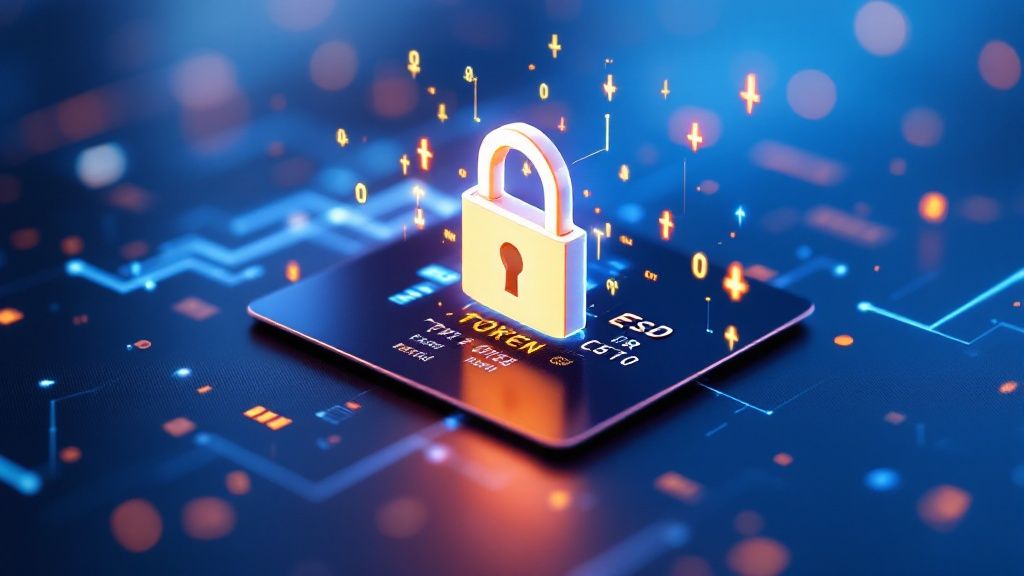
Why It's a Top Practice
Device fingerprinting can link multiple fraudulent orders back to a single device, exposing fraud rings that might otherwise go unnoticed. For instance, services like ThreatMetrix (now part of LexisNexis) and Sift use this technology to build a global network of device reputations. If a device has been associated with fraud on another merchant's site, you get an alert, effectively stopping the fraud before it happens on your store. Behavioral analytics adds another layer by flagging user sessions with unnatural behavior, such as a customer pasting card details instantly, suggesting they're using stolen data from a list.
How to Implement It
Integrating this technology into your Shopify store can significantly reduce chargebacks and manual reviews. Here are some actionable steps:
- Combine Device Data with Other Signals: Don't rely solely on the fingerprint. Use it alongside other data points like geolocation, order value, and transaction speed to build a more accurate risk score for each order.
- Use Behavioral Analytics to Reduce False Positives: A legitimate customer might be flagged for using a new device while on vacation. Analyzing their normal browsing behavior can confirm their identity and prevent a good order from being declined.
- Ensure Privacy Compliance: Be transparent in your privacy policy about the data you collect. Make sure your implementation follows rules like GDPR and CCPA, which have strict guidelines around user data and tracking. Platforms like Forter build these compliance measures directly into their fraud prevention solutions.
5. Velocity Checks and Transaction Limits
Imagine a thief with a stolen credit card trying to buy as much as possible before the card is canceled. They'll often make many small purchases rapidly or one massive purchase to max out the limit. Velocity checks and transaction limits are like a digital security guard trained to spot this exact behavior, shutting down suspicious activity before it causes significant damage. This strategy monitors the frequency, volume, and value of transactions within a specific timeframe to identify and block abnormal patterns.
This approach is a core component of ecommerce fraud prevention best practices because it focuses on behavior rather than just credentials. A fraudster might have a legitimate-looking card number, but their frantic purchasing behavior is a dead giveaway. By setting rules for how many times a card, IP address, or customer account can be used in a day, you can automatically flag or block attempts that look more like a machine-driven attack than a real customer shopping.
Why It's a Top Practice
Velocity checks are highly effective at stopping card testing and automated bot attacks. For instance, PayPal constantly monitors transaction velocity; if it detects an unusual number of payments from one account in a short period, it may temporarily freeze the account pending verification. Similarly, banks often place daily spending limits on cards to cap the potential loss from a single fraudulent event. These rules act as an automated circuit breaker for fraud.
How to Implement It
You can integrate velocity checks directly into your ecommerce platform or through a dedicated fraud prevention app. Here are some practical steps to get started:
- Monitor Multiple Parameters: Don't just look at one metric. Track the number of transactions per IP address, per credit card, and per customer account over different timeframes (e.g., per hour, per day). A sudden spike in any of these is a red flag.
- Set Dynamic Limits: Instead of a one-size-fits-all limit, create different thresholds based on customer history. A new customer making ten purchases in an hour is far more suspicious than a loyal customer who has shopped with you for years.
- Implement Graduated Responses: A hard block can sometimes frustrate a legitimate customer. Consider a softer approach, like flagging a transaction for manual review or triggering a multi-factor authentication request if a velocity rule is breached.
By carefully monitoring transaction patterns, you can catch fraudsters in the act. For persistent offenders identified through these checks, you can take further action. You can discover more about how to blacklist and block fraudulent customers on Shopify.
6. Geolocation and IP Address Analysis
Knowing where your customers are shopping from is more than just a nice piece of data; it's a powerful tool for stopping fraud in its tracks. Geolocation and IP address analysis work like a digital detective, examining the geographic location of a transaction to see if it makes sense. It checks where an order is placed against the customer's billing address, shipping address, and past behavior to spot inconsistencies.
This technique cross-references the location of the IP address (the unique identifier for a device on the internet) with other data points. If a customer who has always shopped from Ohio suddenly places an order from a high-risk country with a credit card registered in Florida, alarm bells should go off. This approach is a core part of ecommerce fraud prevention best practices because it flags suspicious activity based on physical impossibilities or unusual patterns.
Why It's a Top Practice
Geolocation data helps identify obvious red flags that other methods might miss. For example, banking apps often use this to flag transactions happening in a different country from your usual location. Similarly, streaming services like Netflix use it to monitor for account sharing across different regions. It catches "impossible travel" scenarios, like a purchase made in New York just minutes after one was made in London from the same account.
How to Implement It
You can integrate geolocation analysis into your fraud detection system without creating friction for good customers. Here are a few practical steps:
- Combine Geolocation with Other Signals: Don't rely on location data alone. Use it alongside device fingerprinting, velocity checks, and AVS results to get a complete picture of the transaction's risk level.
- Use Graduated Responses: A location mismatch doesn't always mean fraud. Instead of an outright block, consider triggering a request for additional verification, like an SMS code, for medium-risk mismatches.
- Regularly Update High-Risk Databases: The world of fraud is always changing. Work with a provider like MaxMind or IP2Location to keep your lists of high-risk IP ranges, proxies, and geographic locations current.
- Factor in Time Zones: Analyzing the transaction's time stamp relative to the buyer's local time zone can uncover more subtle fraud patterns, such as orders placed at unusual hours.
7. Customer Due Diligence and Risk Profiling
Accepting an order without knowing who your customer is can be a risky bet. Customer due diligence is like running a background check before you ship your products. It involves vetting customers when they first sign up and continuously assessing their risk level based on their transaction history and behavior. This practice helps you build a trustworthy customer base and apply the right security measures where they're needed most.
This proactive approach goes beyond simply reacting to fraudulent transactions. It’s about understanding the "who" behind the purchase to stop fraud before it happens. By creating risk profiles, you can separate your legitimate, high-value customers from potential threats, customizing the shopping experience accordingly. This is a core part of advanced ecommerce fraud prevention best practices because it builds a foundation of trust from the very first interaction.
Why It's a Top Practice
Customer due diligence allows you to identify high-risk users early on. For example, financial institutions perform extensive Know Your Customer (KYC) checks to prevent money laundering, and marketplace platforms often vet new sellers before they can list products. This process weeds out bad actors from the start, protecting your business and your legitimate customers from potential harm.
How to Implement It
Integrating customer due diligence into your store can be done without creating unnecessary friction for good customers. Here are some actionable steps for your ecommerce store:
- Implement Tiered Verification: Apply different levels of verification based on risk. A new customer making a small purchase might not need extra checks, but a large, unusual order should trigger a more thorough identity verification process.
- Use Multiple Data Sources: Don't rely on a single piece of information. Combine data like IP address location, email age, device fingerprinting, and transaction history to build a comprehensive risk profile for each customer.
- Regularly Update Risk Profiles: Customer behavior changes over time. Continuously monitor accounts and update their risk scores based on new activities, ensuring your fraud detection stays accurate and relevant.
By carefully vetting and profiling your customers, you can create a safer and more secure shopping environment. To learn more about how to apply these concepts specifically to your store, explore these tips for Shopify fraud prevention.
8. Secure Payment Processing and Tokenization
Handling raw credit card data on your own server is like storing dynamite in your basement. A single breach could be catastrophic. Secure payment processing and tokenization offer a powerful alternative, protecting sensitive customer data by replacing it with a non-sensitive equivalent, known as a token. This token can be used for transactions without exposing the actual card details.
This method essentially outsources the risk. When a customer enters their card information, it's sent directly to a secure payment processor, which then returns a unique token to your system. You can safely store and use this token for future purchases or subscriptions, while the actual card number remains securely vaulted by the processor. This is a fundamental ecommerce fraud prevention best practice that drastically reduces your PCI compliance burden and liability.
Why It's a Top Practice
Tokenization minimizes the risk of a data breach. If your system is compromised, fraudsters will only find useless tokens instead of valuable credit card numbers. Payment solutions like Apple Pay and Google Pay use this principle by creating a device-specific token for each transaction. Similarly, platforms like Stripe and Square build their entire infrastructure around end-to-end encryption and tokenization, ensuring data is secure from the moment it's entered.
How to Implement It
Integrating secure payment processing is more accessible than ever for ecommerce stores. Here are some key steps to take:
- Choose a PCI DSS Level 1 Certified Processor: Always partner with a payment gateway that meets the highest level of Payment Card Industry Data Security Standard (PCI DSS) compliance. This ensures they have a robust security infrastructure to protect cardholder data.
- Use Hosted Payment Pages: Offload the data handling process entirely. By using a hosted payment page or an iframe provided by your processor, the sensitive payment data never even touches your servers, which significantly simplifies your PCI compliance requirements.
- Implement a Strong SSL Certificate: Ensure all data transmitted between your customers and your site is encrypted by using an up-to-date SSL/TLS certificate. This protects information from being intercepted during transit.
By leveraging these secure processing methods, you create a fortified payment environment that protects your customers and your business. For platforms like Stripe, understanding these security layers is key to managing risk, and you can get more details on how to manage chargeback protection on Stripe.
8-Point Ecommerce Fraud Prevention Strategies Comparison
Automate Your Defense and Focus on Growth
Navigating the world of ecommerce means staying one step ahead of fraudsters. Throughout this guide, we've explored a powerful toolkit of ecommerce fraud prevention best practices designed to protect your store, your revenue, and your customers. From the foundational checks of AVS and CVV to the sophisticated analysis of device fingerprinting and machine learning, each strategy adds another critical layer to your defense.
Implementing these practices isn't about building an impenetrable fortress overnight. It’s about creating a smart, resilient system that adapts to new threats. Think of it as a dynamic shield, where each element—like velocity checks, geolocation analysis, and secure tokenization—works together to identify and stop suspicious activity before it results in a loss. The goal is to make your business a much harder target than the next one, encouraging criminals to simply move on.
The True Value of a Proactive Strategy
A strong fraud prevention framework does more than just stop bad transactions. It builds trust with legitimate customers, reduces the headache of chargeback disputes, and protects your brand's reputation. When customers know their data is safe, they shop with confidence. When you spend less time fighting fraud, you have more time to dedicate to product development, marketing, and customer service.
Ultimately, a proactive defense is an investment in your business's future. To truly focus on growth while defending against fraud, consider optimizing non-core operations through strategic approaches like leveraging ecommerce outsourcing services. This allows you to delegate specialized tasks and concentrate your internal resources on scaling your brand. The key takeaway is that effective fraud management is not a cost center; it's a growth enabler.
By embracing these ecommerce fraud prevention best practices, you create an environment where your business can thrive securely. You shift from a reactive, damage-control mindset to a proactive position of strength. This confidence allows you to scale your operations, enter new markets, and build a lasting business without the constant fear of financial loss and operational disruption.
Even with the best prevention, some chargebacks are inevitable. Let ChargePay handle the entire dispute process for you with AI-powered automation. Recover lost revenue and get back to growing your business by visiting ChargePay to see how we can help.
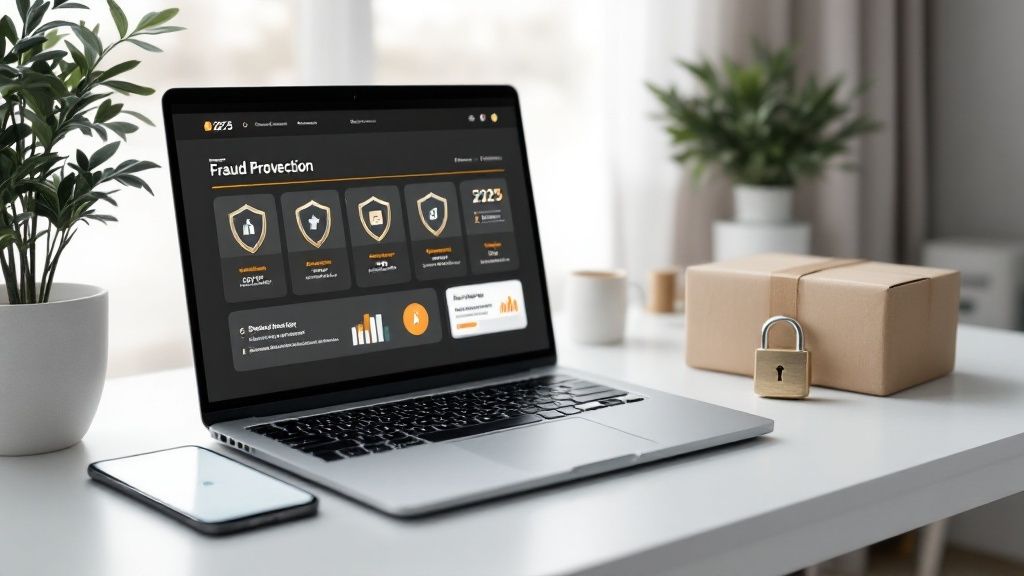


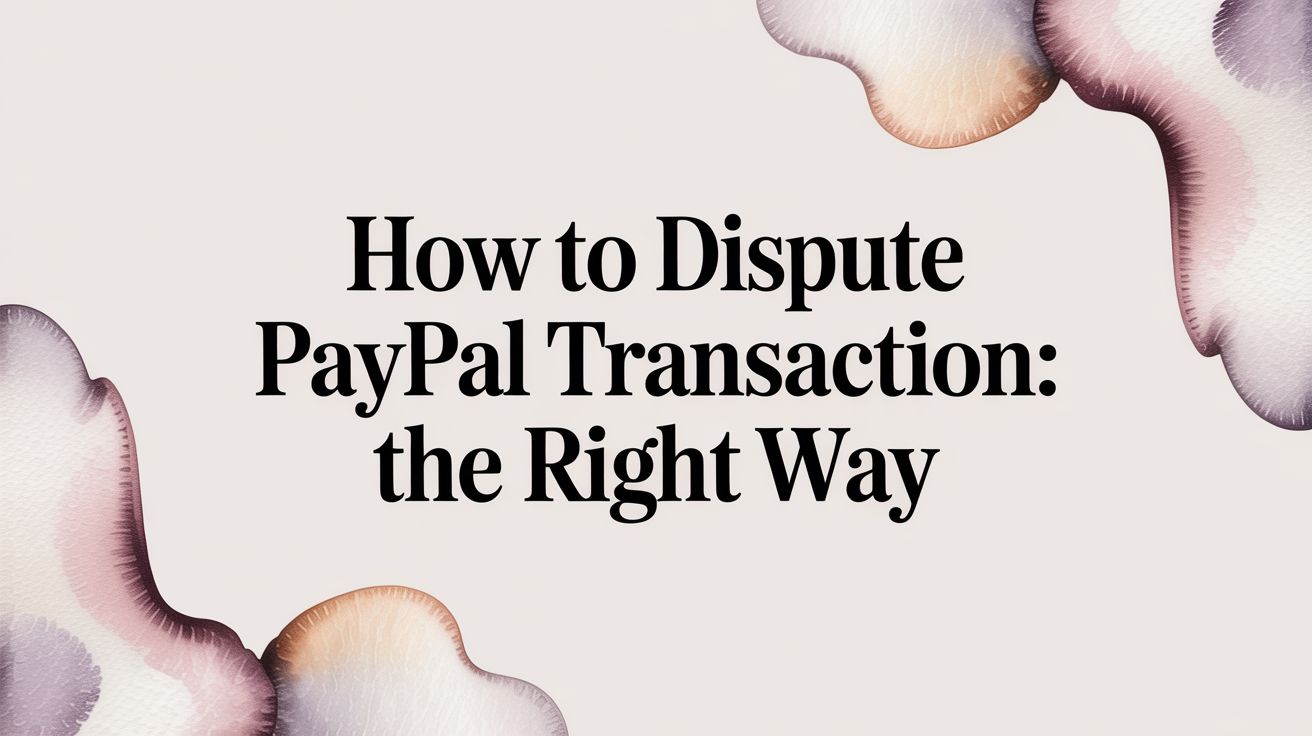
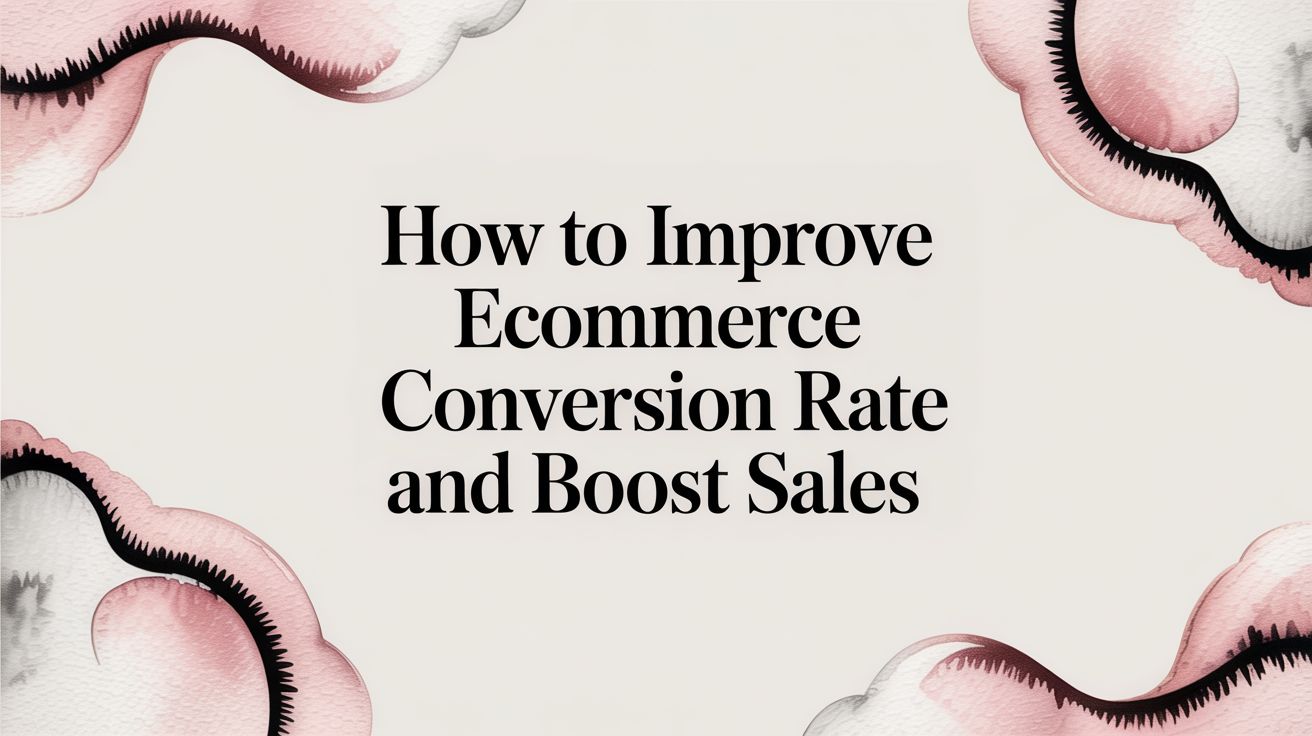
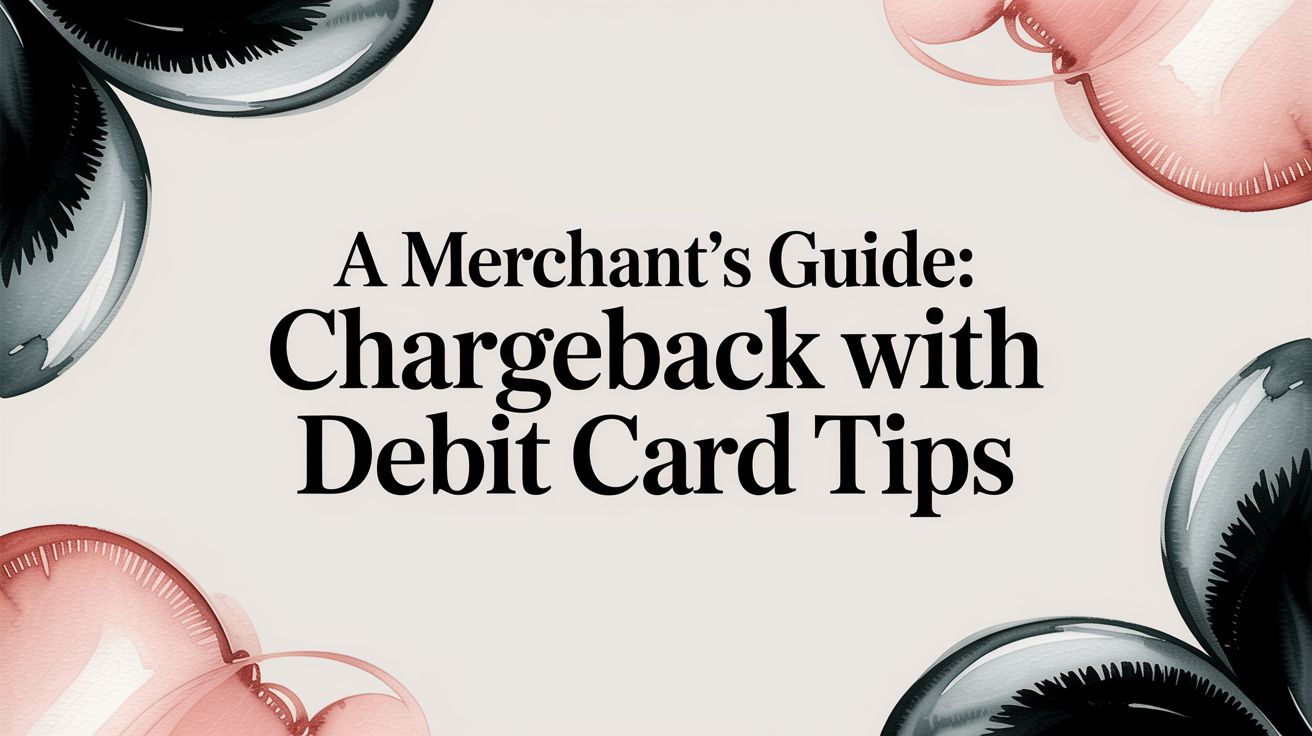

.svg)







.svg)
.svg)
.svg)